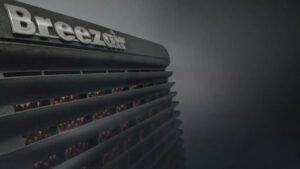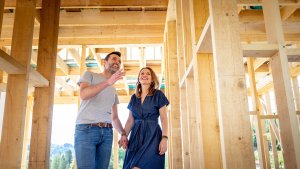Considering Reverse Cycle Air Conditioning? Here’s everything you need to know
- Australia
- Residential
- Sustainability, Heating, Cooling, FAQ’s & Tips
Reverse Cycle Air Conditioning is one of the most efficient solutions for both, cooling in summer and heating in winter. It provides year-round comfort, making it a popular choice for Australian homeowners. But with different system types available, how do you know which one suits your home best?
In this blog, we’ll explain how Reverse Cycle Air Conditioning works, explore different system types, discuss their suitability for various Australian climates, and help you make an informed decision.
How does Reverse Cycle air conditioning work?
Reverse Cycle Air Conditioning uses a refrigeration cycle to provide both heating and cooling in one system.
Here’s how it functions:
- The system absorbs heat from inside the home when cooling and releases it outside.
- In heating mode, the process is reversed heat is drawn from the outside air (even in cold weather) and transferred indoors.
- The system continuously cycles the refrigerant to maintain the desired indoor temperature.
This seamless process ensures efficient temperature control for any season of the year, making it a practical choice for Australian homes.
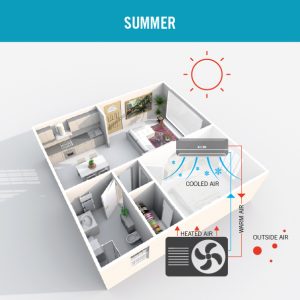
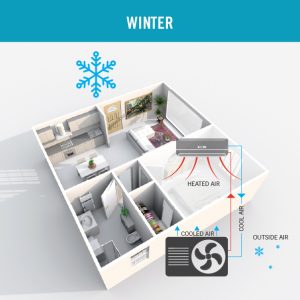
Types of Reverse Cycle air conditioning
1. Ducted Reverse Cycle Systems
A ducted system distributes air through a network of ducts connected to vents in each room. It consists of an indoor central unit (installed in the ceiling or under the floor) and an outdoor unit.
In a ducted system, the outdoor unit absorbs heat and transfers it to the indoor unit. The indoor unit then distributes conditioned air throughout the home via ducts. This system is designed for whole-home heating and cooling, providing even temperature control across multiple rooms.
Benefits and considerations:
Ducted Reverse Cycle Systems are ideal for larger homes and open-plan living spaces. They provide even temperature control and can be zoned to heat or cool specific areas, improving efficiency. Their quiet operation makes them a great choice for households looking for discreet air conditioning.
However, they do come with higher upfront costs due to duct installation and require space for ducts, making them unsuitable for smaller homes without adequate roof space.
- Best suitable for: large homes, open-plan living spaces, and multi-level properties.
2. Individual Split Reverse Cycle Systems
A single split system consists of a wall-mounted indoor unit paired with a separate outdoor compressor unit. The outdoor unit absorbs and transfers heat or cooled air to the indoor unit, ensuring efficient temperature control.
Since each indoor unit operates independently, split systems are excellent for targeted cooling or heating in specific rooms, such as bedrooms or home offices.
Benefits and considerations:
Split systems are cost-effective, easy to install, and highly energy-efficient for single rooms or small spaces. They provide flexible control, allowing users to adjust temperatures for individual rooms.
However, split systems are limited to heating or cooling a single room at a time. If multiple units are installed, the number of outdoor compressor units can clutter the outdoor space.
- Best suitable for: Apartments, small homes, or specific rooms like bedrooms and home offices.
3. Multi-Split Reverse Cycle Systems
A multi-split system connects multiple indoor units to one outdoor unit, allowing independent temperature control across different rooms.
The outdoor unit serves multiple indoor units through refrigerant pipes. Each indoor unit operates independently, meaning different rooms can have customised temperature settings without requiring multiple outdoor units.
Benefits and considerations:
Multi-split systems save space by reducing the number of outdoor units and are ideal for homes needing independent climate control in multiple rooms. They are more energy-efficient than installing multiple single-split systems.
However, installation costs can be higher than single split systems, and careful planning is required for optimal performance.
- Best suitable: Medium to large homes with multiple rooms needing climate control.
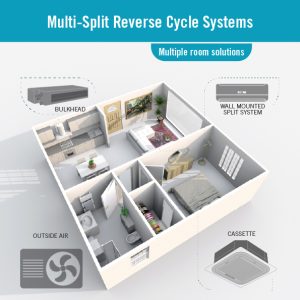
Suitability by Australian climate
Australia has diverse climates, which impact the effectiveness of Reverse Cycle Air Conditioning.
Region | Recommended system | Reason |
| Cool Climates (VIC, TAS, ACT) | Ducted or multi-split | Consistent heating for cold winters. |
| Warm Climates (QLD, NT, WA) | Split or multi-split | Flexible cooling for high temperatures. |
| Mild Climates (NSW, SA) | Any system | Balanced temperatures suit all types. |
Choosing the right Reverse Cycle system
When selecting an air conditioning system, consider these factors:
Home Size:
- Large homes (4+ bedrooms, open plan living) benefit from ducted systems.
- Small homes or apartments (1-3 bedrooms) are better suited for split or multi-split systems.
Budget:
- Ducted systems require a higher upfront investment (starting from $7,5001 + including installation) but offer long-term efficiency.
- Single split systems are more affordable (around $1,2502 + per unit) and easier to install.
- Multi-split systems fall in between, costing more than single splits but less than ducted setups.
Energy Efficiency:
- All Reverse Cycle systems are energy-efficient, but multi-split systems optimise efficiency by managing multiple rooms from one outdoor unit.
- If you have solar panels, running your system on solar energy can significantly reduce operating costs.
Installation & Maintenance:
- Ducted systems require professional installation and regular servicing.
- Split and multi-split systems have lower maintenance needs but still benefit from routine servicing to ensure efficiency.
Have you heard about the Braemar Dominator Series? It’s a game-changing reverse cycle hybrid system that runs on all-electric reverse cycle technology!
Braemar Dominator Series
For the best solution on Reverse Cycle air conditioning, contact your nearest Seeley International dealer to inspect your home. A professional inspection can help determine the most suitable system, as technical factors like home insulation, airflow, and roof space can affect your options.
Find your nearest dealer
1. Price based on a single storey 3-bedroom home for a single phase 7kW Braemar ducted system. Estimate is accurate at time of publishing.
2. Price based on a small bedroom with a 2.5kW Braemar split system. Estimate is accurate at time of publishing.
